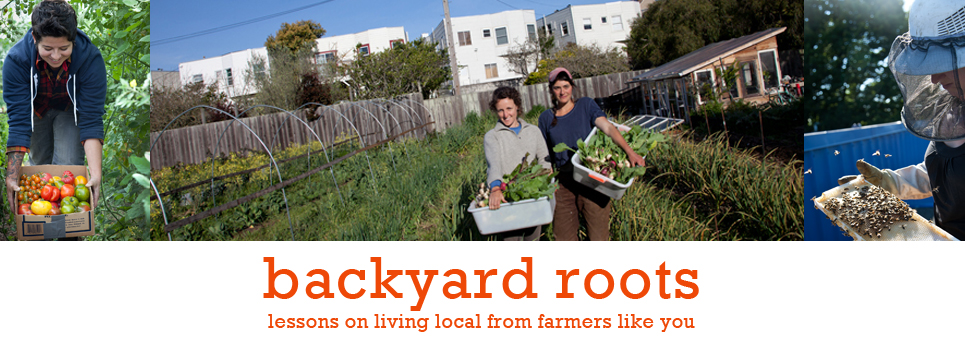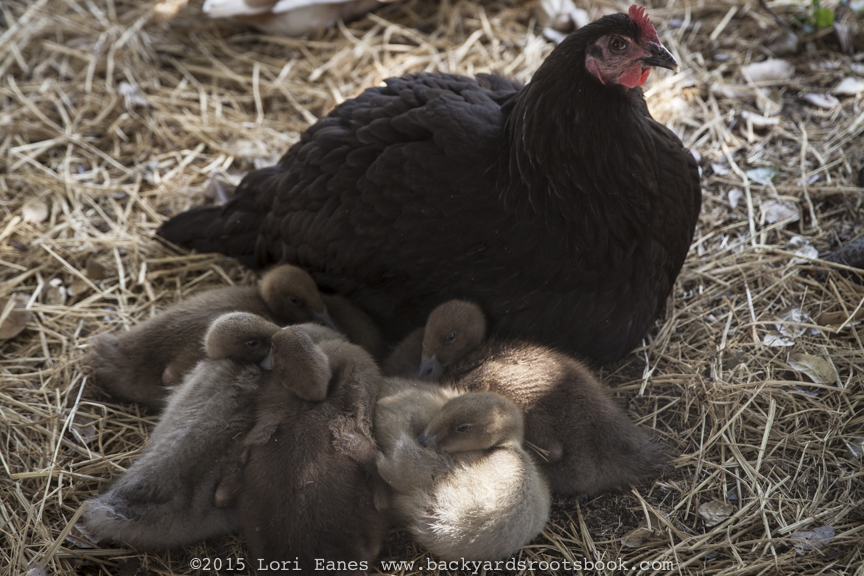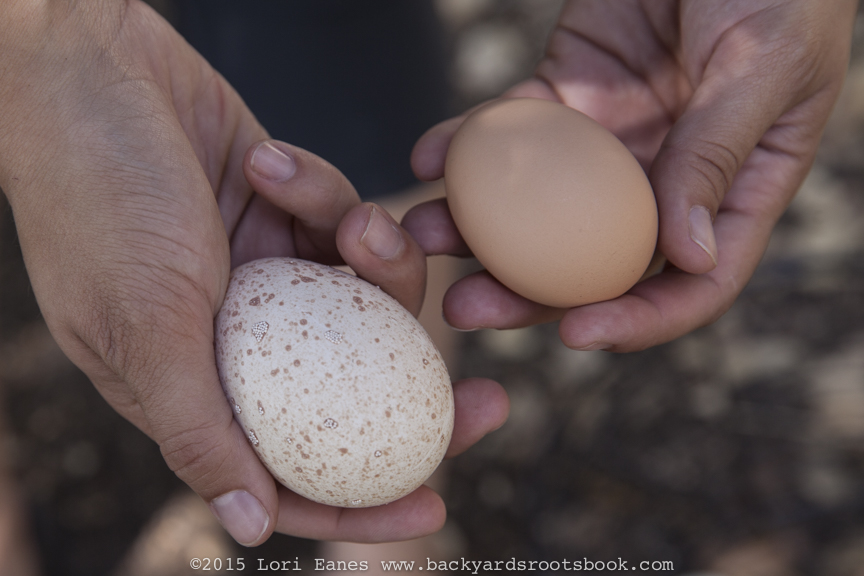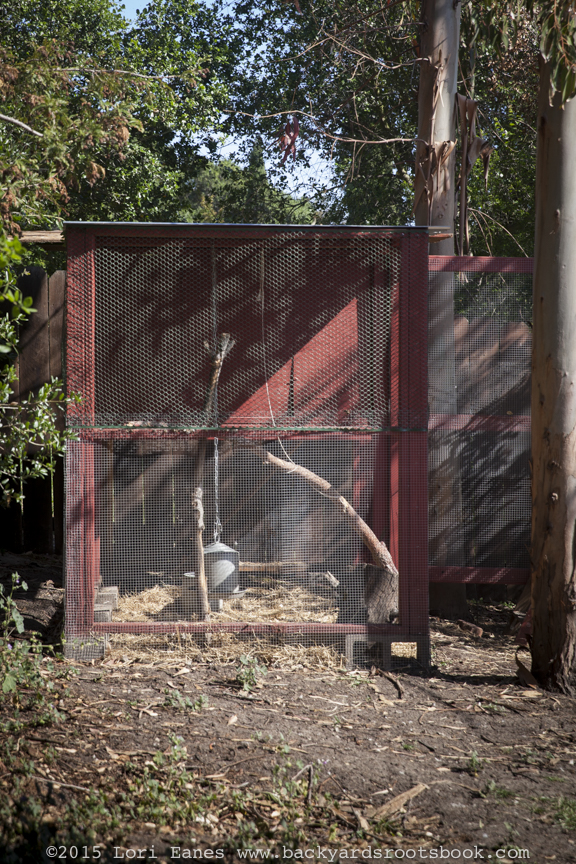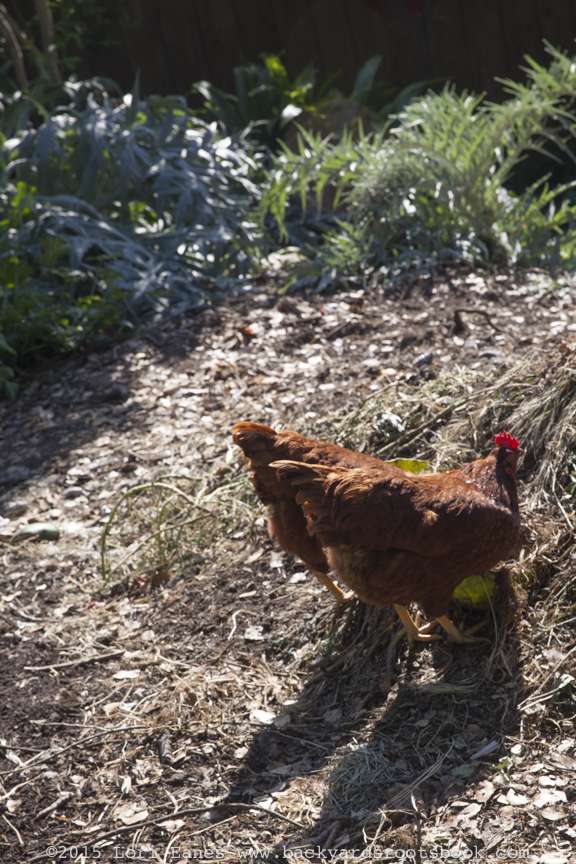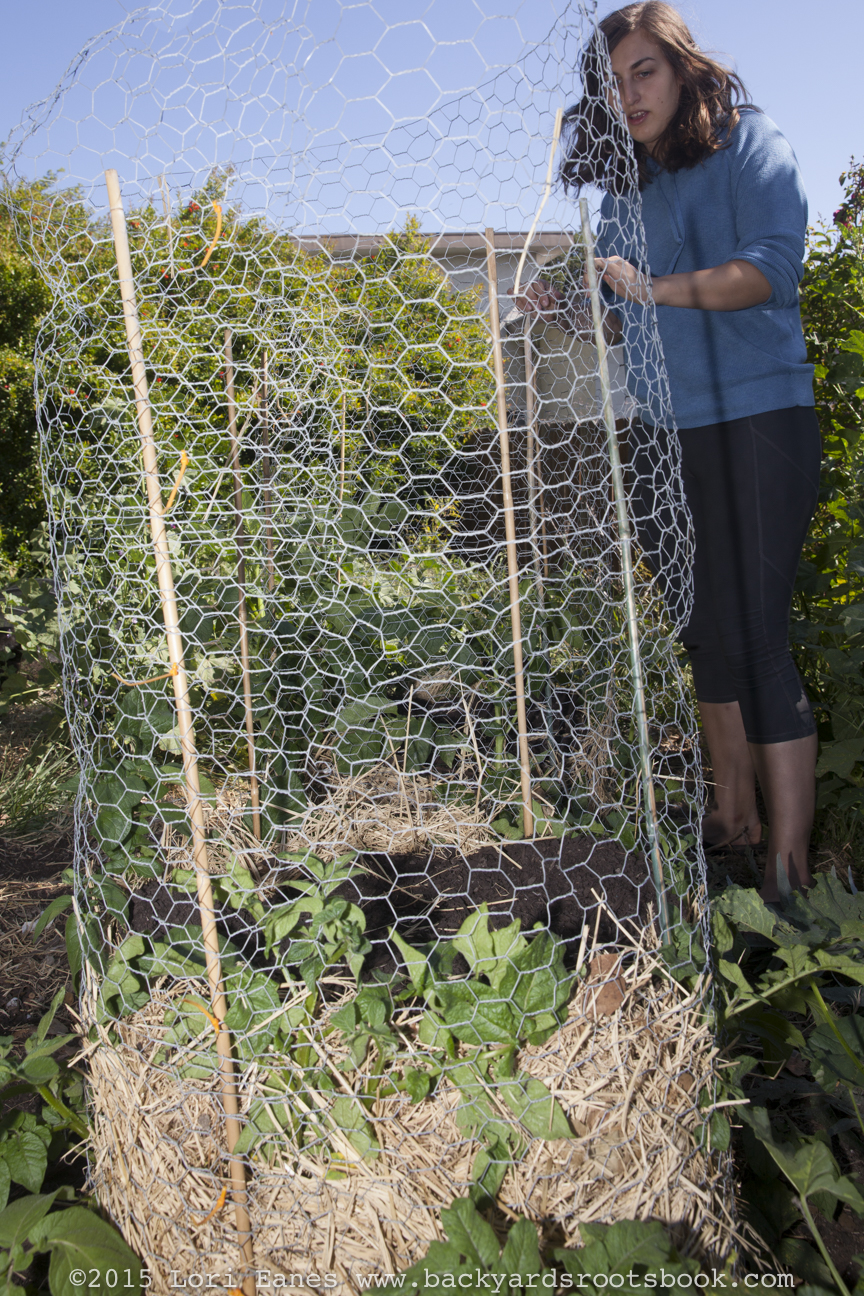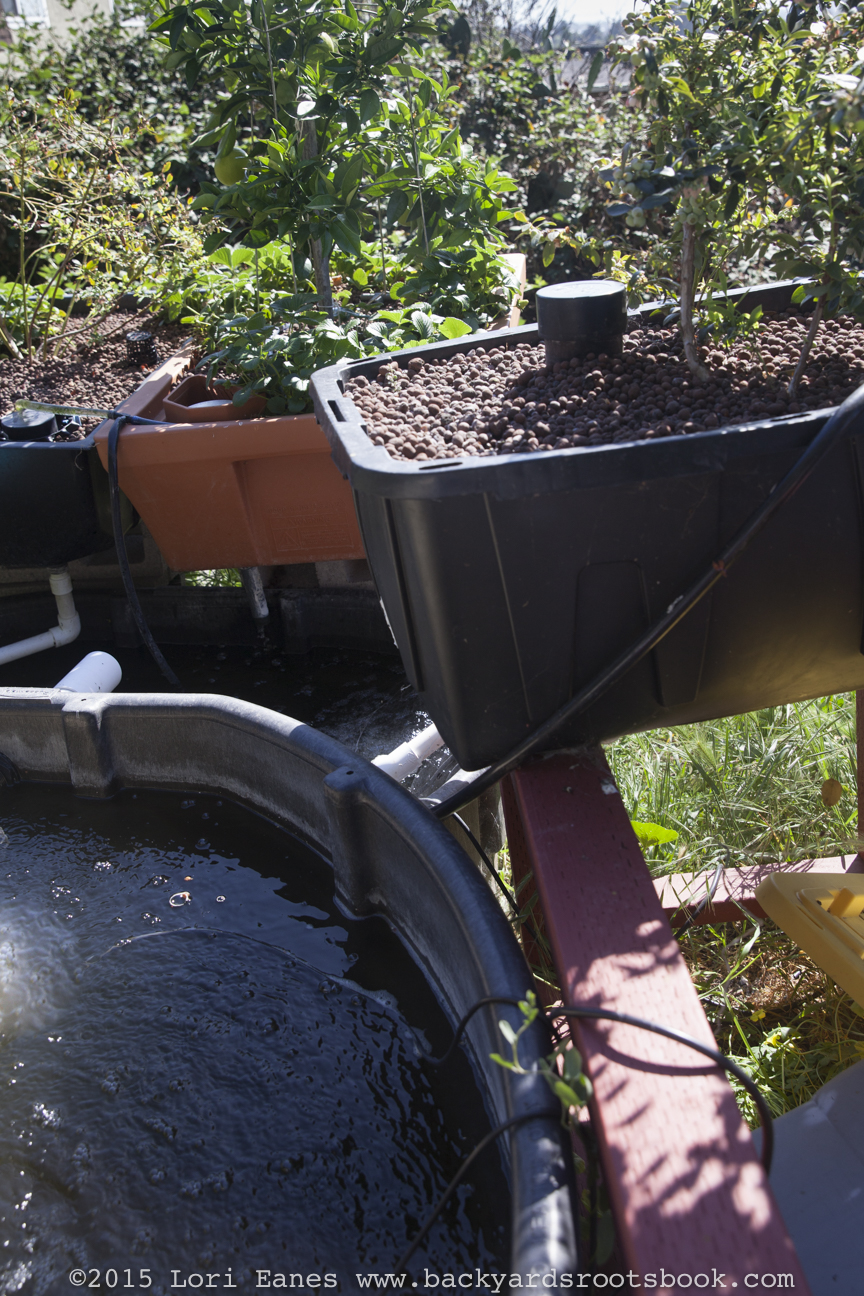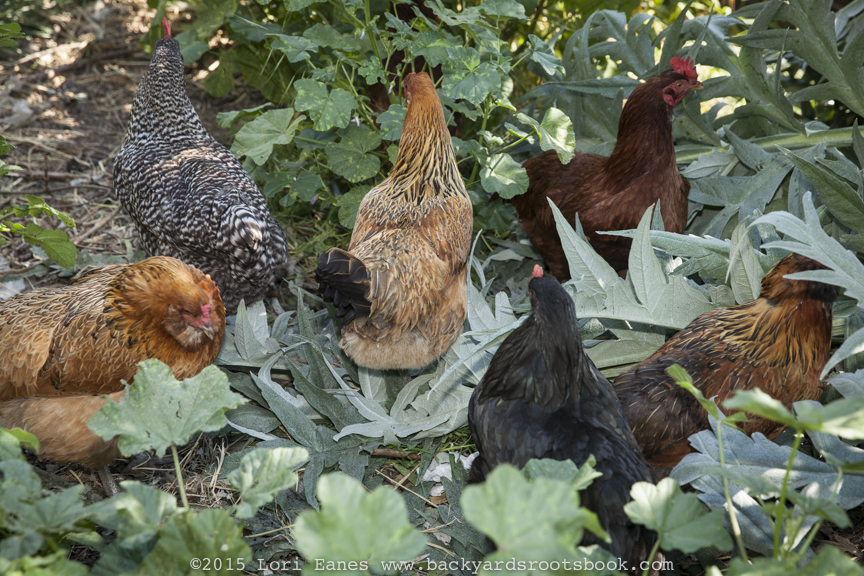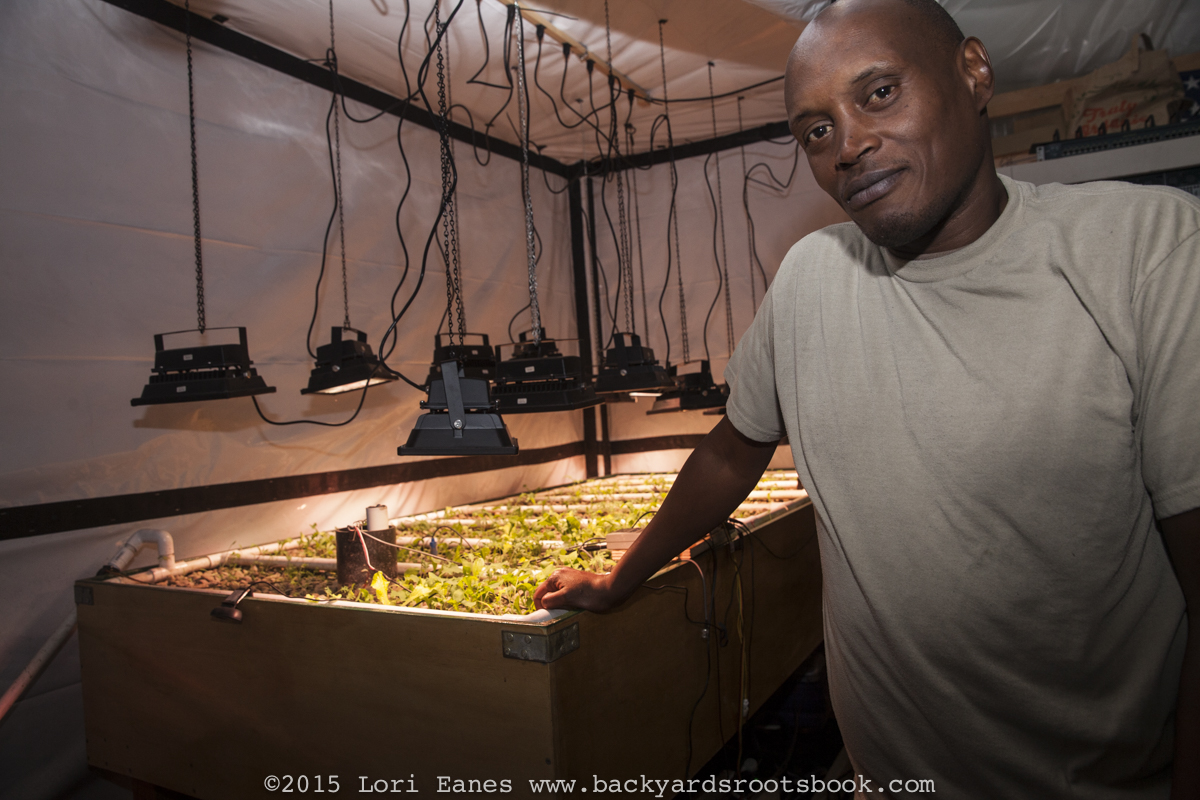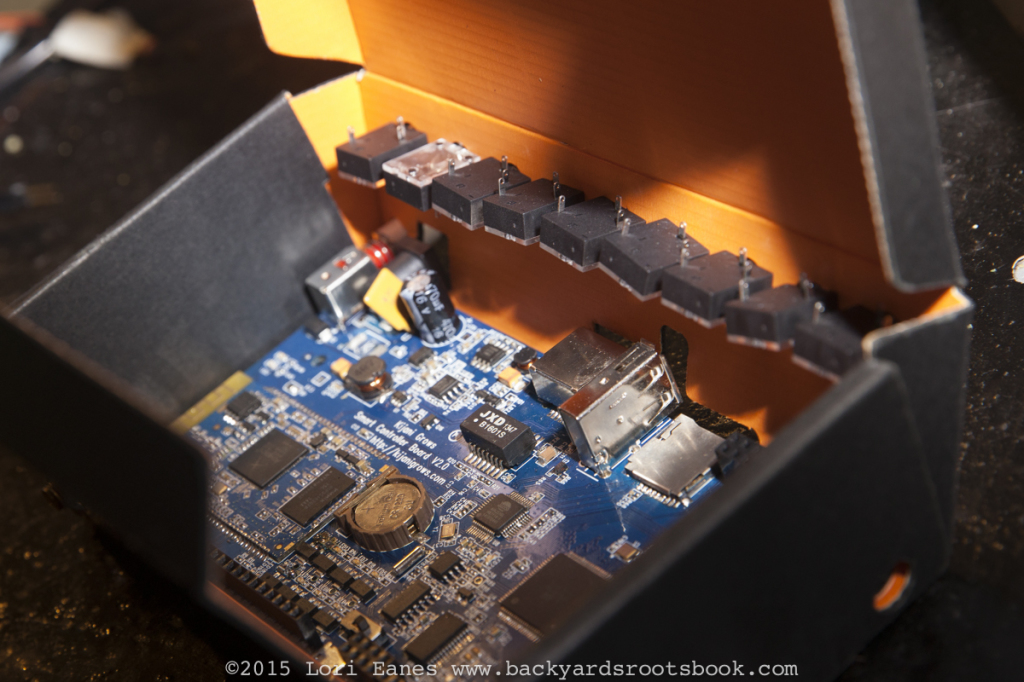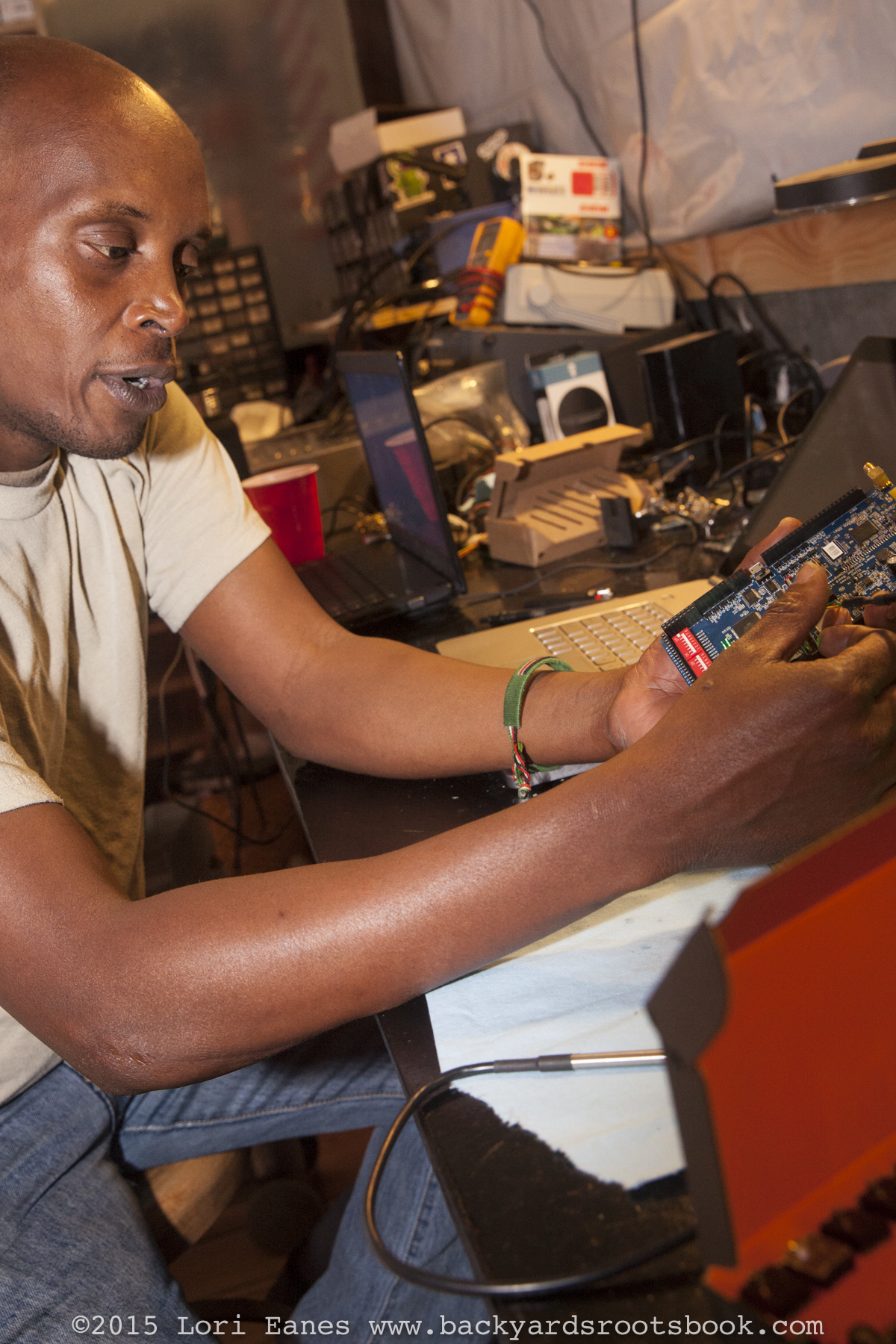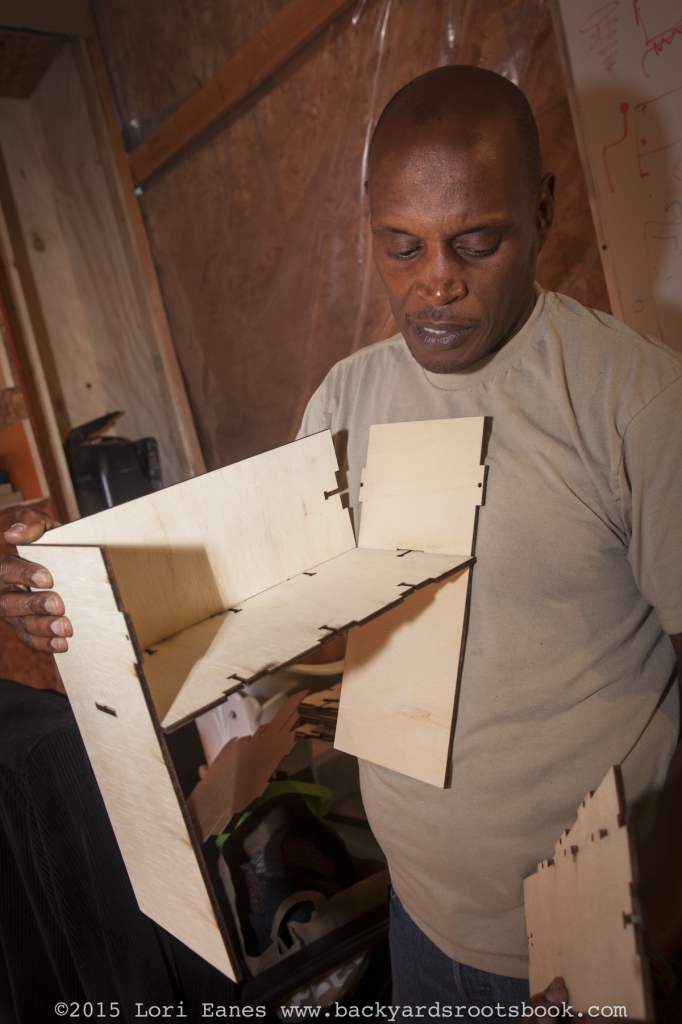I visited Rachel Kayen’s Oakland urban farm this past weekend. She and her roommates have a half acre yard in the Mills College neighborhood that’s a backyard lab of ideas. On it they have aquaponics, bees, vegetables and currently 9 chickens, 7 ducks and a turkey, with more turkeys on the way. Rachel says she’s been raising animals since she got into 4H when she was just a kid.
One idea I liked was letting a hen raise ducklings. Most domestic ducks have lost their instinct to brood, but finding a broody hen to take over the job is not hard and it’s way more interesting for everyone involved. This hen has been raising 6 ducklings since she sat on the eggs last month. The ducklings follow her around and at night she keeps them warm under her. So they may grow up confused… Read about it in detail on Rachel’s blog and see a video of a duckling hatching: citylights.uf.com Next up, Rachel is letting another hen take over the turkey eggs.
Another tip is making compost the easiest way possible, you don’t even need a bin. They have a basic “hot pile” with a dirt bottom. Start with nitrogen rich vegetable scraps in the middle (comfrey, pumpkins, squash, alfalfa are all full of nitrogen) Then add brown matter on top to insulate (dead plant matter, like leaves or hay) Add a little water now and then to help the decaying begin and each time you have more nitrogen rich vegetable matter, add it to the middle. Soon the decaying will heat up the center and you’ll have rich soil for your veggies, worms included. PS Free range chicken will do the mixing for you.
I’ve always been interested in growing potatoes and Rachel gave me some tips. When she’s ready to plant potatoes she starts by buying old organic potatoes that have “eyes” that are starting to put out shoots. Cut the potato into sections around each “eye” to plant. She grows them in these chicken wire structures that make harvesting easy and keeps the growing potatoes dry. As the shoots grow, more compost and hay is added. When the compost and soil reaches near the top of the structure she has 80 pounds of organic potatoes! Rachel has a great blog post with more details here (scroll down)
The aquaponics system was built by one of Rachel’s roommates who spent time in China learning aquaponics from farmers. It’s different than others I’ve seen because it has an extra pool that serves as a buffer between the plants and fish. Fish are very sensitive to pH changes and having the extra pool helps stabilize the system. Rachel said they had strawberries all winter with their system.
One last tip is to fence your vegetable plots and let your chickens be free range instead of the other way around. Not everyone can do this, but if your yard is large enough the chickens won’t wander and they’ll eat your pests and fertilize as they go. Just be sure the fence around the vegetables is secure. Rachel says lately they’ve just let the chicken roost in the trees at night. Raccoons are not a problem in their neighborhood. The big lesson from this urban farm is this. Chickens: get them working. Be sure to check out Rachel’s blog for more ideas: citylightsuf.com
